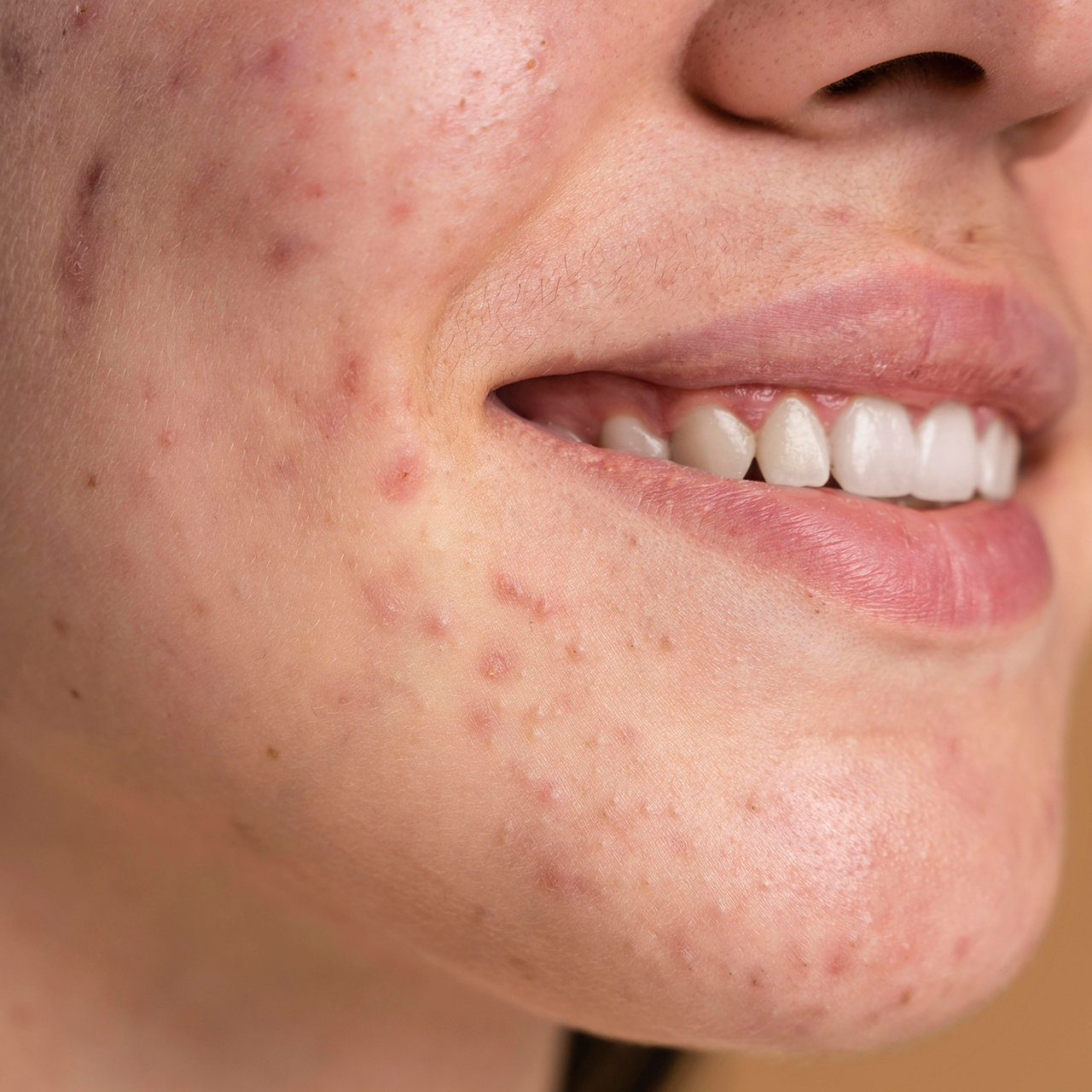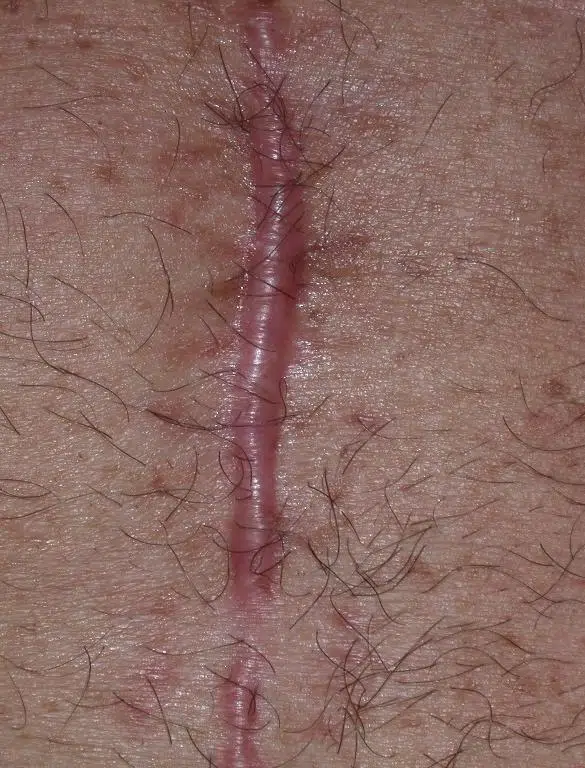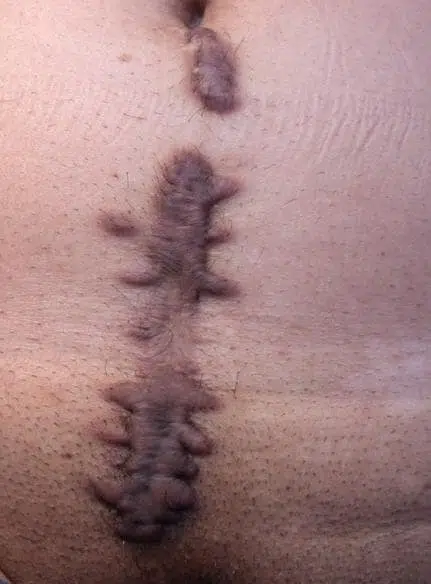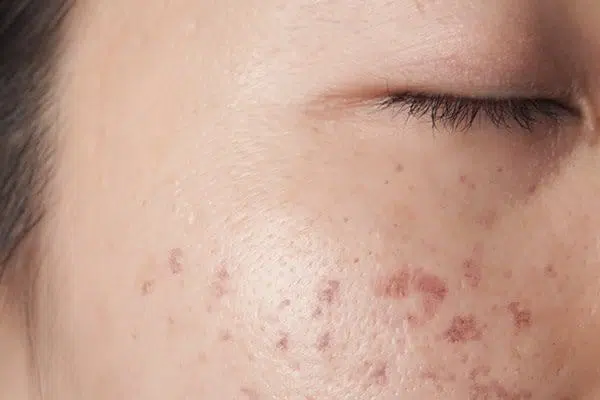Facial Care
Discover Our Aesthetic Treatments for the Face

These skin lesions are quite unsightly, but thanks to aesthetic medicine, it is possible to achieve smoother and more even skin.
REDUCING OR ELIMINATING ACNE SCARS
Unfortunately, it is impossible to completely eliminate them, but they can be significantly reduced, making them much less visible.
Fractional Laser FRAX 1550
The Ellipse FRAX 1550 fractional laser is a non-ablative fractional laser. Unlike ablative lasers that destroy the epidermis by creating "holes in the skin" and leave sequelae for 3 to 7 days, the non-ablative fractional laser does not cause a rupture of the epidermis but only micro-columns of coagulation under the skin's surface.
Hyaluronic Acid Injections
Certain deeply depressed facial scars may require the use of filling products. The longevity of products in this indication, and in an area often less subject to movement, allows for a longer-lasting result compared to correction for aging.
A recent application is the improvement of acne scars, where hyaluronic acid allows for the elevation of depressions and sequelae holes or "craters" in some types of acne.
This treatment should be repeated annually as hyaluronic acid is a resorbable product.
Chemical Peeling
Dermatological peeling is a procedure used for certain atrophic and hypertrophic scars. A substance, used in high concentration, contained in the peeling (phenol, trichloroacetic acid), is applied to the face, irritating the outer layers of the skin. The chemical peel will thus cause the controlled destruction of part or all of the epidermis, with or without the dermis, leading to the desquamation of superficial lesions, followed by the regeneration of new epidermal and dermal tissues, resulting in smoother skin with less visible scars.
For scars, chemical peels based on trichloroacetic acid (TCA) are often used. The concentration of acid and reaction time is defined by the practitioner during a prior consultation. The session can be repeated one to three times without any health risks. Only soothing cream-based care is required after a session. The results improve exponentially with each session.
Microneedling
This technique involves using a roller equipped with tiny needles to create microchannels through which carefully selected active ingredients are simultaneously introduced. The simultaneous injection boosts the production of collagen and elastin in the dermis to fill in the scar depressions.
A solution based on anti-aging actives (antioxidant vitamins, hyaluronic acid, peptides...) or growth factors can be applied to the area being treated.
Other devices based on radiofrequency, ultrasound, or plasma energy have the same effect as lasers. These different energies cause a thermal reaction when in contact with the skin, ablating the first layer of the dermis and gradually eliminating scars as the skin regenerates.
DIFFERENT TYPES OF ACNE SCARS
There are different types of scars, the ones most often associated with acne include:
Atrophic Scars
They appear as a depression on the skin's surface, sometimes referred to as "ice-pick scars." They occur when a wound does not heal properly, and there is insufficient connective tissue formation. The scar then develops below the surrounding tissue, and a small indentation (hollow or crater) becomes visible.


Hypertrophic Scars
Hypertrophic scars are recognized by their elevation on the skin or scar tissue. These scars are swollen and have a kind of overgrowth of skin tissue compared to the surrounding skin, but they do not exceed the boundary of the injury. The back, chest, and shoulders are areas prone to hypertrophic scars.
Keloid Scars
Keloid scars are extreme forms of hypertrophic scars. They result from an overly aggressive healing process. Unlike hypertrophic scars, they extend beyond the boundaries of the original injury. These scars become thick, raised, firm, and can cause itching, sometimes accompanied by pain. Keloid scars are more common in individuals with darker skin tones. Injuries on the chest and ears are more prone to keloid scars. This type of scar is only occasionally caused by acne.


Pigmented Scars
– Hyperpigmented scars (brown or black): These are post-inflammatory hyperpigmentation (PIH) of the skin caused by the stimulation of melanocytes following inflammatory acne. The inflammation and damage to the skin caused by the acne lesion lead to an excess production of melanin at the site of the scar.
– Inflammatory scars (pink or red): A red scar is due to inflammation of blood vessels; the blood vessels have been damaged. Thus, it takes time for the skin to repair these vessels.
– Hypopigmented scars (white): These are white scars that have undergone depigmentation.





